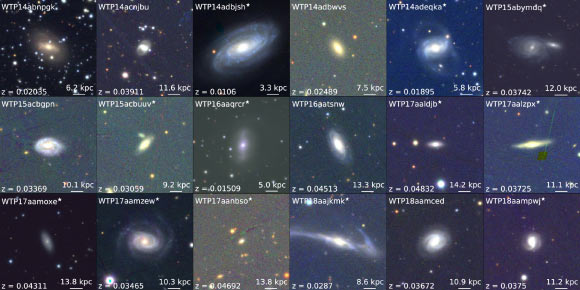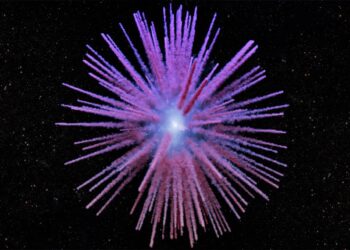A tidal disruption event occurs when a star winds up so close to a supermassive black hole that the tidal forces exceed the star’s self-gravity and shred the star; as the black hole feasts, it gives off an enormous burst of energy across the electromagnetic spectrum.
“The majority of the new sources don’t show up in optical bands,” said Megan Masterson, a graduate student in MIT’s Kavli Institute for Astrophysics and Space Research.
“If you want to understand tidal disruption events (TDEs) as a whole and use them to probe supermassive black hole demographics, you need to look in the infrared band.”
Masterson and her colleagues recently detected the closest TDE yet, by searching through infrared observations.
The discovery opened a new, infrared-based route by which astronomers can search for actively feeding black holes.
That first detection spurred the group to comb for more TDEs.
For their new study, the researchers searched through archival observations taken by NASA’s NEOWISE mission.
They looked through the mission’s archived observations using an algorithm that picks out patterns in infrared emissions — likely signs of a transient burst of infrared radiation.
They then cross-referenced the flagged transients with a catalog of all known nearby galaxies within 600 million light-years.
They found that infrared transients could be traced to about 1,000 galaxies.
The authors then zoomed in on the signal of each galaxy’s infrared burst to determine whether the signal arose from a source other than a TDE, such as an active galactic nucleus or a supernova.
After ruling out these possibilities, the team then analyzed the remaining signals, looking for an infrared pattern that is characteristic of a TDE — namely, a sharp spike followed by a gradual dip, reflecting a process by which a black hole, in ripping apart a star, suddenly heats up the surrounding dust to about 1,000 K before gradually cooling down.
The team’s analysis revealed…
Read the full article here







